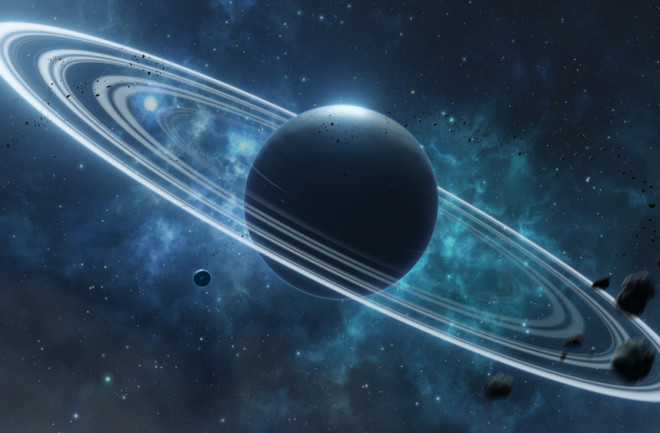A New Theory Explains Why Uranus Rotates On Its Side by Astronomers
Uranus must have toppled over some time in the past. Now astronomers have a new idea why
The peculiar manner Uranus rotates on its side is one of the strangest events in our Solar System. All the other planets revolve with their faces upward, so that is puzzling. What may have happened to separate Uranus from its neighbor Neptune, which originated at the same period and under identical conditions, and to make Uranus so unique?
According to traditional wisdom, Uranus was turned on its side by a series of collisions with some of the countless planetesimals that passed through the region shortly after the Solar System formed.

This argument has a flaw in that Neptune was unharmed by the same circumstances. This implies that Uranus’ peculiar behavior was caused by some other mechanism. What, though, may this be?
Toppled Orbit
Thanks to the research of Melaine Saillenfest and colleagues at the Paris Observatory in France, who believe Uranus may have been turned on its side in another way, we now have an explanation. They assert that the tilting is explicable if Uranus formerly had a sizable, long-ago satellite whose orbit gravitationally interacted with the planet’s rotation in a way that gradually flipped the planet on its side.
First, some context. The gravitational interaction between planets and their satellites may be intricate and persistent, as astronomers have long known. Small satellites’ periodic gravitational nudges as they orbit can, in fact, have a major effect on their bigger hosts.
The impacts can be greatly amplified when the nudges happen at a frequency that resonates with a feature of the host planet, especially when the satellite is gradually drifting away from its host.
The Moon is steadily moving away from Earth, at a pace of around 4 centimeters each year, according to astronomers. The satellites that orbit Jupiter and Saturn are also moving, according to new measurements.
This gave Saillenfest and his associates the idea that perhaps Uranus had a similar event. Under these circumstances, gravitational nudges from a sizable satellite may have echoed with the precession of Uranus’ spin axis, causing the planet to slowly tilt onto its side.
In order to ascertain the circumstances under which this would have happened, the scientists used Uranus to mimic the process.
As it turns out, a satellite that was only a thousandth of Uranus’ mass might have tilted the planet as it moved away from it across a distance of around ten times Uranus’ radius. According to Saillenfest and colleagues, “to achieve the tilting in less than the lifetime of the Solar System, the satellite’s mean drift rate must be equivalent to the Moon’s present orbital expansion.”
According to the team’s calculations, the satellite’s orbit and the planet’s behavior both become chaotic and unpredictable after the planet’s tilt exceeds 80 degrees, putting it in danger of colliding with Uranus.
When this occurs, however, Uranus’ behavior stabilizes and its spin locks at this incredibly odd, slanted angle. The fact that Uranus now lacks a large satellite, in contrast to Neptune, Saturn, and Jupiter, which all have large satellites like as Ganymede and Titan, is telling.
Fossilized Spin
That notion is intriguing and has a lot going for it. According to Saillenfest and colleagues, this is the first time that a single process has been able to tilt Uranus and fossilize its spin axis in their ultimate states without including a massive impact or other extraterrestrial occurrences.
It is not, however, a sure thing. The scientists state that while the tilting’s necessary parameters “seem generally conceivable,” it is still unclear whether Uranus could have supported a large primordial satellite susceptible to significant tidal migration.
A greater comprehension of the current motion and other characteristics of Uranus’ satellites might help shed additional light on this scenario. Much of this information on Saturn and Jupiter had to wait until the arrival of several orbiting spacecraft, including Galileo, Juno, and Cassini.
There has only been one spacecraft that has traveled alone to Uranus. In January 1986, Voyager 2 sped by as it left the Solar System. Additionally, no mission has been authorized despite preparations by several space agencies to deploy an orbiter.
Astronomers will have to settle for the ever-detailed observations from Earth and from the JWST until they are. According to Saillenfest and co., the statistics should be helpful. “Our findings can provide a solid foundation for further research.”
Do not forget to share your opinion with us to provide you with the best posts !



0 Comments